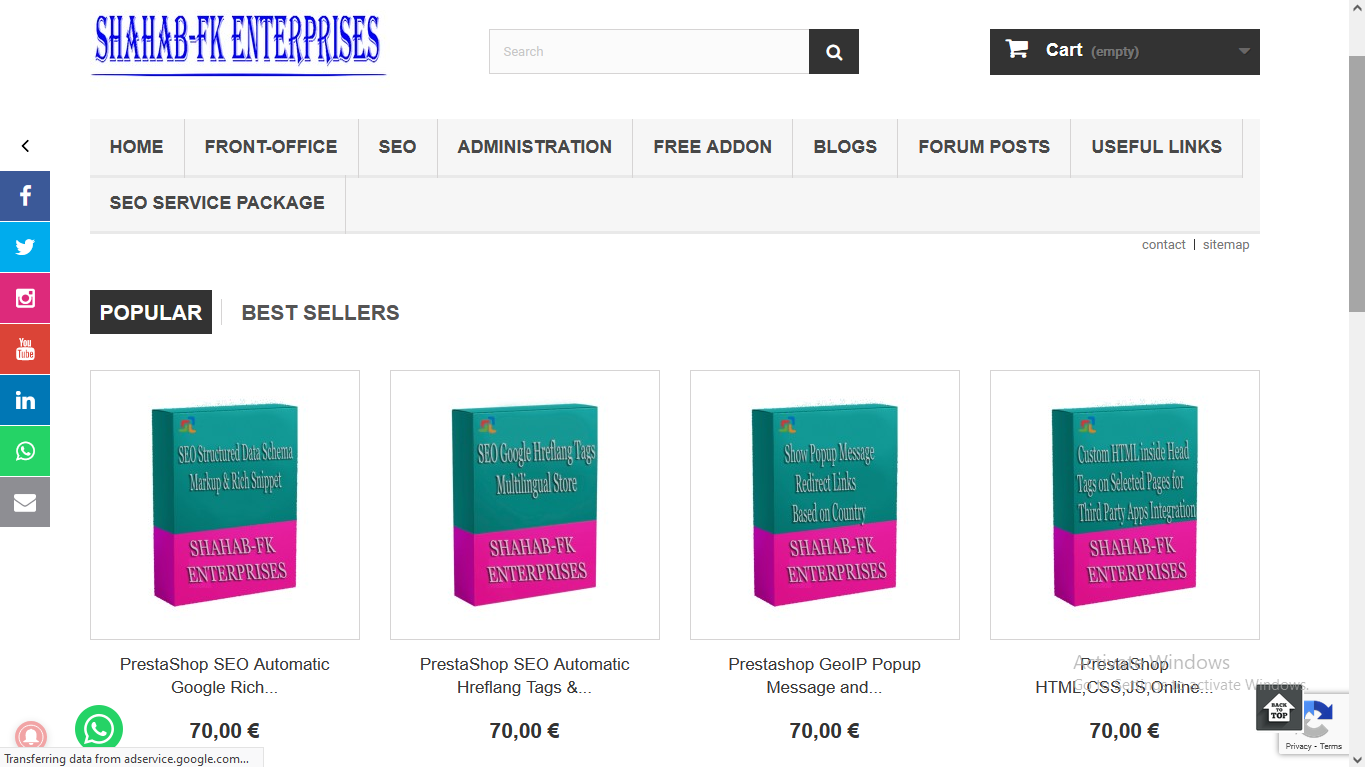Upgrading PrestaShop is a critical task, as it involves updating your e-commerce platform to the latest version, which may include important bug fixes, security patches, and new features. To successfully upgrade PrestaShop, follow these general steps. Please note that the specific steps and considerations may vary depending on the versions you are upgrading from and to, and whether you have any customizations or third-party modules. Always backup your website and database before performing any upgrade.
- Preparation:
- Backup: Make a full backup of your website files and database. This is crucial to restore your store in case something goes wrong during the upgrade.
- Check Compatibility: Ensure that your current theme and installed modules are compatible with the version you plan to upgrade to. Some older modules or themes may need updates or replacements.
- Check Server Requirements: Ensure that your hosting environment meets the system requirements for the target PrestaShop version.
- Disable Caches: Disable any server-side or application-level caching to prevent issues during the upgrade process.
- Download the New Version:
- Download the latest version of PrestaShop from the official website.
- Upgrade Test Environment:
- It’s highly recommended to perform the upgrade in a staging or test environment first to identify and address any issues without affecting your live store.
- Upgrade Process:
- Unzip the downloaded PrestaShop files.
- Connect to your server using an FTP client.
- Upload the new PrestaShop files to your website’s root directory. You may choose to overwrite the existing files or delete the old files first.
- Access your store in a web browser. The PrestaShop upgrade process should start automatically. Follow the on-screen instructions, and the system will perform the necessary database updates.
- During the upgrade process, PrestaShop may disable non-native modules and themes. You will need to re-enable or reinstall them if necessary.
- Database Update:
- The upgrade process will update your database schema. Make sure this process completes successfully.
- Re-enable Modules and Themes:
- After the upgrade, re-enable any modules and themes that were disabled during the process. Check for updates for these components to ensure compatibility with the new version.
- Test and Debug:
- Thoroughly test your store on the staging environment to ensure that everything is functioning correctly.
- Look for visual and functional issues, test orders, payment gateways, and the admin interface.
- Address any issues, including theme and module compatibility, and fix any broken functionality.
- Security and Performance:
- Ensure that your store’s security features (e.g., SSL certificates, firewall settings) are up-to-date and properly configured.
- Optimize your store for performance by leveraging caching, content delivery networks, and other techniques.
- Finalize the Upgrade:
- Once you are confident that your store is working correctly in the test environment, you can proceed to upgrade your live store. Repeat the same process, making sure to have a backup of your live store before doing so.
- Monitor After Upgrade:
- Keep a close eye on your live store for any unexpected issues or errors. Address them promptly.
- Customer Notification:
- Consider notifying your customers about the upgrade and any changes that may affect their user experience.
- Post-Upgrade Maintenance:
- Regularly update modules, themes, and the PrestaShop core to stay up-to-date with the latest improvements and security updates.
Always consult the official PrestaShop documentation and consider seeking professional help if you are unsure about any part of the upgrade process. Upgrading PrestaShop can be complex, and it’s essential to handle it with care to avoid disrupting your online business.

